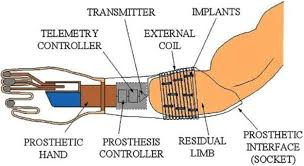Introduction: The Balancing Act Between Durability and Performance
Prosthetics have come a long way from their rudimentary beginnings, evolving into highly sophisticated devices that aim to replicate the function and form of natural limbs. Among the key challenges in designing prosthetics are durability and performance two critical factors that ensure these devices can withstand daily use while delivering optimal functionality. In this article with bandar togel, we explore the scientific principles and innovations that drive the development of durable and high performing prosthetics, shedding light on how these devices empower individuals to lead active and fulfilling lives.
Understanding the Core Requirements of Prosthetics
Prosthetic devices are not one size fits all solutions. They are highly personalized, designed to meet the unique needs and lifestyles of their users. However, every prosthetic must meet certain core requirements to be effective:
1. Structural Integrity
Durability is a fundamental requirement for prosthetics. These devices must endure repeated stress, including weight bearing, impact, and environmental exposure. The materials and construction must prevent wear and tear over time while maintaining safety and reliability.
2. Functional Performance
Performance refers to how well the prosthetic mimics the natural limb’s functions. This includes movement, flexibility, energy efficiency, and responsiveness. For users who lead active lifestyles or participate in sports, performance becomes even more crucial.
3. Comfort and Adaptability
Beyond durability and performance, prosthetics must be comfortable to wear and adaptable to the user’s activities and environments. A balance between stiffness and flexibility ensures both stability and natural movement.
The Science of Durability: Materials and Design
The durability of prosthetics is largely determined by the materials used and the engineering principles applied in their design. Let’s dive into the key components that make prosthetic durable.
Advanced Materials
Modern prosthetics are crafted using materials that combine strength, lightness, and resilience. Some of the most commonly used materials include:
- Carbon Fiber: Lightweight yet incredibly strong, carbon fiber provides excellent energy return and durability, making it ideal for high performance prosthetics.
- Titanium: Known for its corrosion resistance and strength, titanium is a popular choice for structural components of prosthetics, especially for users with high activity levels.
- High Grade Polymers: Flexible and impact resistant, these materials are often used in prosthetics designed for children or users requiring lightweight solutions.
- Graphene: An emerging material in prosthetic technology, graphene offers unparalleled strength and flexibility, promising a new frontier in durability.
Engineering Principles
Engineers use advanced design techniques to enhance the durability of prosthetics. Some of these include:
- Load Distribution: Distributing weight evenly across the prosthetic prevents localized stress points that could lead to material failure.
- Shock Absorption: Incorporating shock absorbing elements reduces impact forces, extending the lifespan of the device.
- Modular Construction: Many prosthetics are designed with interchangeable components, allowing for easy replacement and reducing wear on critical parts.
Maximizing Performance: The Role of Biomechanics
Performance in prosthetics is deeply rooted in biomechanics the study of the mechanical principles of living organisms. By understanding how the human body moves, engineers and scientists can design prosthetics that closely replicate natural limb function.
Energy Efficiency
One of the key aspects of performance is energy efficiency. Prosthetics with energy storing capabilities, such as carbon fiber feet, absorb energy during impact and release it during propulsion. This mimics the spring like action of a natural foot, reducing fatigue for the user and enabling smoother movement.
Dynamic Movement
High performing prosthetics are designed to facilitate a range of motions, from walking and running to jumping and climbing. Advanced joint mechanisms, such as microprocessor controlled knees, allow for precise control and adaptability in real time.
User Centric Adaptability
Performance is also about how well a prosthetic adapts to the user’s needs. Prosthetics designed for athletes, for example, prioritize agility and speed, while those for everyday use focus on stability and comfort. Customization ensures that each user gets the performance features that matter most to them.
Challenges in Balancing Durability and Performance
While durability and performance are both essential, achieving a perfect balance can be challenging. For example:
- Durability vs. Weight: Stronger materials, such as metals, tend to be heavier, which can compromise performance and user comfort.
- Flexibility vs. Strength: Increasing flexibility can improve movement but may reduce the overall structural integrity of the prosthetic.
- Cost Implications: High performance materials and advanced engineering often come at a higher cost, which may limit accessibility for some users.
To address these challenges, researchers continue to innovate, exploring new materials and technologies that enhance both durability and performance without compromising affordability or comfort.
The Future of Durable and High Performing Prosthetics
The field of prosthetics is rapidly advancing, driven by breakthroughs in material science, robotics, and artificial intelligence. Here are some exciting trends shaping the future:
Smart Prosthetics
Prosthetics equipped with sensors and AI can provide real time feedback to users, improving control and adaptability. These smart devices can also monitor wear and tear, ensuring timely maintenance for optimal durability.
Bio Inspired Designs
Taking inspiration from nature, bio inspired prosthetics aim to replicate the form and function of natural limbs more closely. These designs often incorporate flexible joints and responsive materials for enhanced performance.
Sustainable Materials
The push for sustainability has led to the development of eco friendly prosthetics made from biodegradable or recycled materials. These innovations not only benefit the environment but also make prosthetics more affordable and accessible.
Empowering Lives Through Innovation
Durability and performance are the cornerstones of effective prosthetic design, enabling users to regain mobility and confidence. By leveraging advanced materials, cutting edge engineering, and a deep understanding of biomechanics, modern prosthetics have transformed the lives of countless individuals. As technology continues to evolve, the future promises even greater advancements, ensuring that prosthetics become more durable, high performing, and accessible than ever before. With each step forward, the science behind prosthetics reaffirms its ultimate goal: empowering individuals to live without limits.
